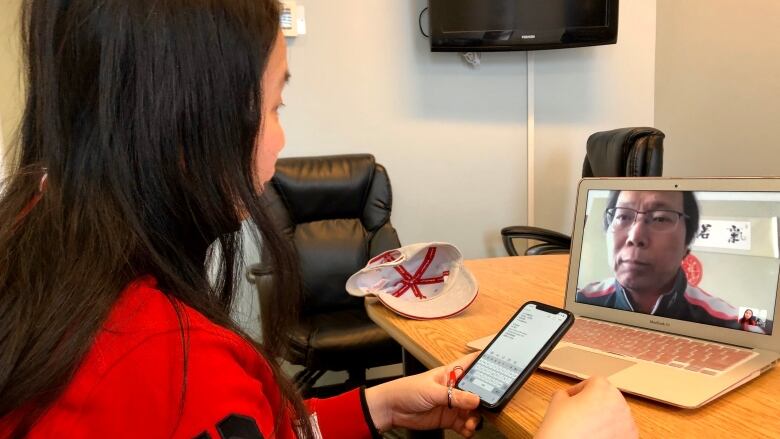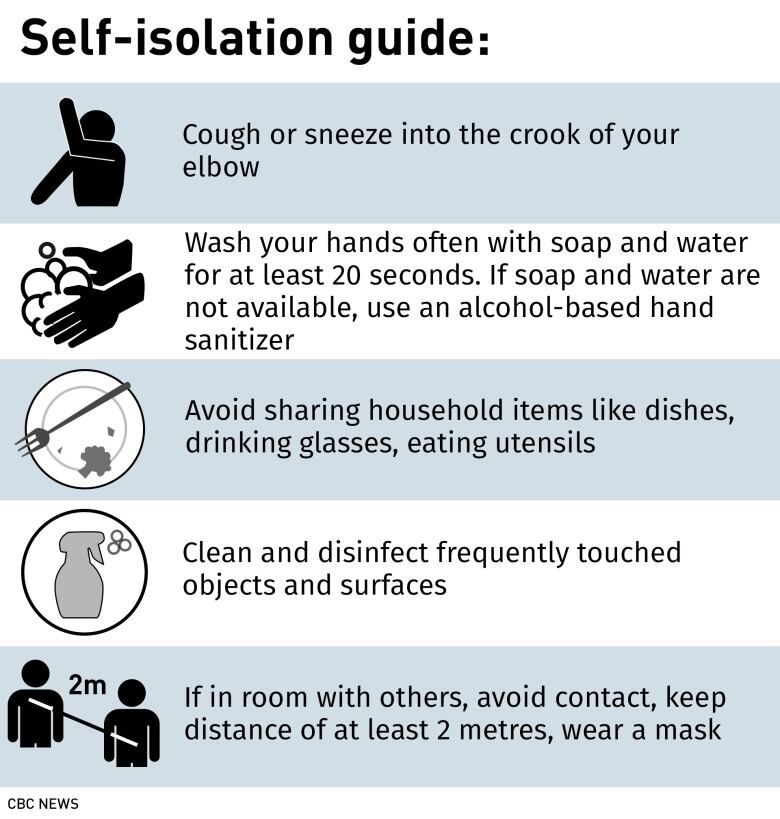Physical distancing versus self-isolation: How they're different
Fines are now in place for people violating self-isolation orders

As Canadians attempt to avoid spreading the coronavirus that causes COVID-19, there are several different levels of care they are being asked,andin some casestold, to take.
Which level of care is appropriate for you depends on your circumstances.
Physical distancing
This one's for everybody.
COVID-19 is a respiratory disease. It grows in your lungs, and the virus comes out when you breathe. This is particularly when you cough, but researchers believe people with mild or even no symptoms can spread the disease.
The virus particles come out of a person's mouth and nose and settle on surfaces, where they can survive for hours or even days in the right conditions. Touch the surface, touch your face, and you can inhale the particles and catch the disease.
If people stay apart, it limits the opportunities for the disease to spread. That's what physical distancing is about. This is for everybody because you can't know for sure that you don't have it.
This is what Health Canada advises for physical distancing.
- Avoid crowded places and non-essential gatherings.
- Avoid handshakes, hugs, and other greetings involving touching. Wave hello instead.
- Limit contact with people at higher risk, older people or people in poor health.
- Keep a distance of at least two arms' lengths (about two metres) from others.
- Stay home as much as possible, including for meals and entertainment.
- Shop or take public transportation during off-peak hours.
Health Canada suggests taking advantage of technology to make physical distancing easier. Host virtual play dates for your children, and use video chat to meet with family and friends.
P.E.I. chief public health officer Dr. Heather Morrison says it is still important to get outside. Children can still play with friends outside if they are old enough to practise physical distancing, but they should not play games where an item is shared, such as catch or basketball.
Self-isolation
This is for people who are at a higher risk for having been exposed to the virus.
Self-isolation is not a recommendation. It is an order. Fines, starting at $1,000, areput in place for people violating self-isolation orders.
Self-isolation has been ordered for anyone who has travelled outside P.E.I., includingwithin Canada, since March 21. People who have travelled outside of Canada since March 8 were previouslytold to self-isolate.
If you are self-isolating you need to stay at home.
You are allowed outside, but must stay on your property. If you live in an apartment, you can go outside so long as you stay on the apartment building's property.

Even within your home, avoid other people. If you have the space, isolate yourself in the house: rooms that are for you, and rooms that are for everyone else. Stick to your own bathroom and your own bedroom.
If it is not possible for you to have your own space, clean the spaces you do use regularly to reduce the possibility of spreading any virus to the people you live with.
Here is a more in-depth guide to quarantine in a shared home.
You can possibly develop the disease with mild symptoms or none at all, and still give it to other people. The people you spread it to, and the people they potentially spread it to, may develop a more dangerous form of the disease.
Since you can't know if you have the disease, act as if you do. Stay at home to avoid spreading it in the community.
COVID-19: What you need to know
What are the symptoms of COVID-19?
Common symptoms include:
- Fever.
- Cough.
- Tiredness.
But more serious symptoms can develop, including difficulty breathing and pneumonia, which can lead to death.
Health Canada has built a self-assessment tool.
What should I do if I feel sick?
Isolate yourself and call 811. Do not visit an emergency room or urgent care centre to get tested. A health professional at 811 will give you advice and instructions.
How can I protect myself?
-
Wash your hands frequently and thoroughly.
-
Avoid touching your eyes, nose and mouth.
-
Clean regularly touched surfaces regularly.
-
Practise physical distancing.
More detailed information on the outbreak is available on thefederal government's website.












_(720p).jpg)


 OFFICIAL HD MUSIC VIDEO.jpg)
.jpg)



























































































